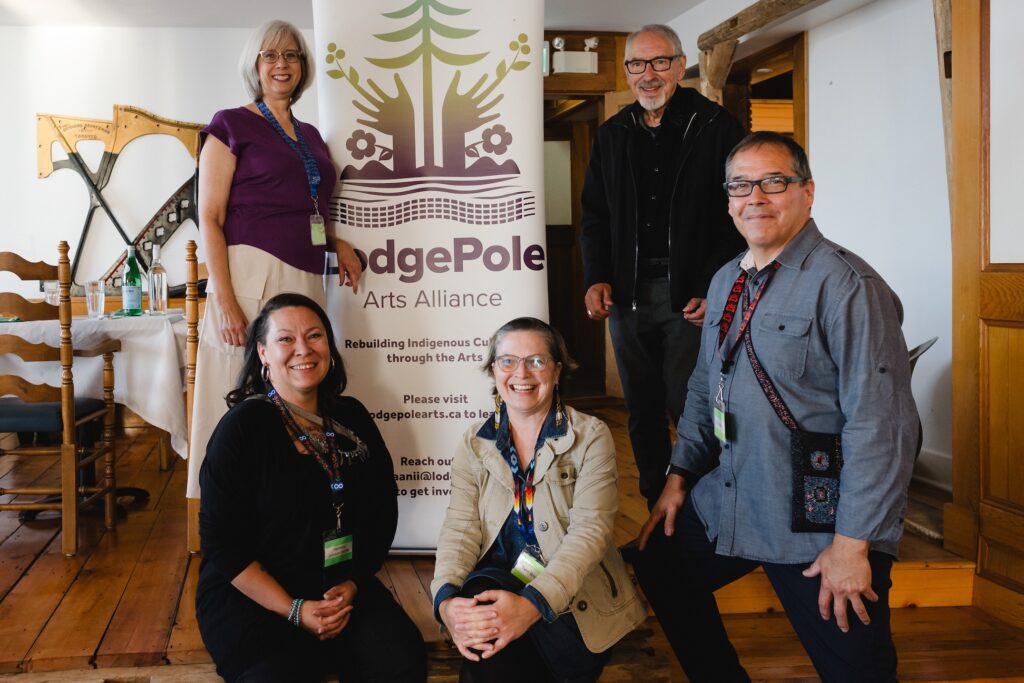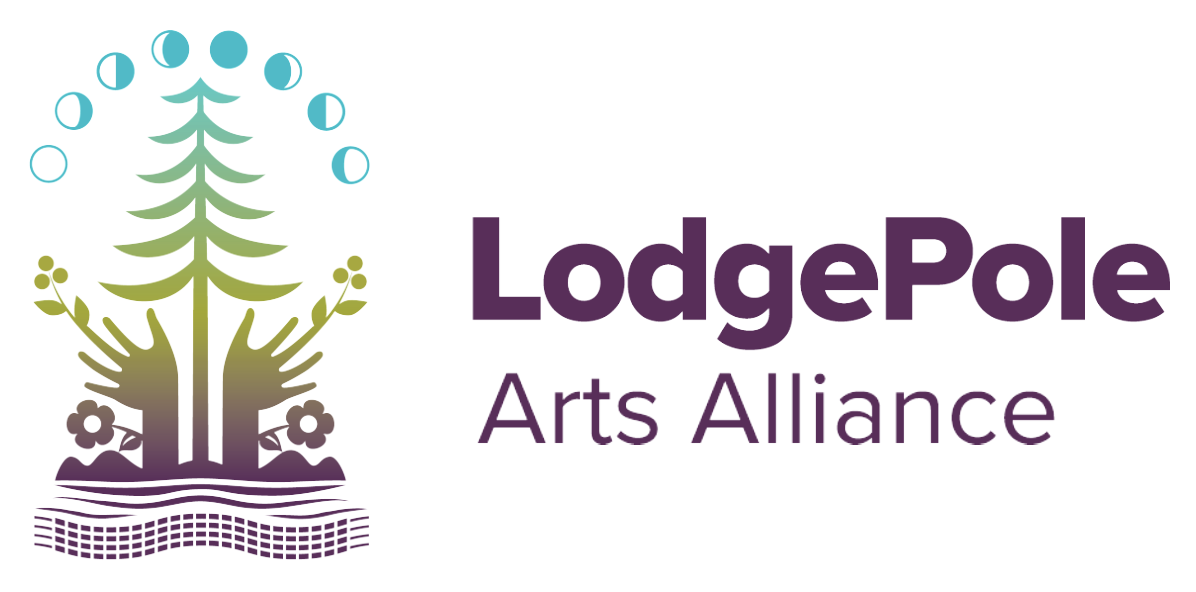About LodgePole Arts Alliance
We currently operate out of the Hotel Wolfe Island, 1237 Road 96, Wolfe Island, and through a satellite office in partnership with the Kingston Association of Museums, Art Galleries and Historic Sites office at 837 Princess Street, Suite 302, Kingston, Ontario, Canada. Over the next five to ten years, LPAA aims to create partnerships with conservation and environmental land-based organizations across the region, province and country, to offer opportunities in creative performance and arts on the land, as well as reigniting land-based rewilding and traditionally sustainable land rejuvenation initiatives on a rotational basis twelve months of the year. A Category A Museum will accompany the artistic space for all local Indigenous ancestors (artifacts) to be repatriated in a manner that inspires and honors their ongoing spirit in the creative initiatives of Indigenous artists. Simultaneously, Indigenous planners, engineers and architects will be consulted to design and develop an artistic center that is rooted in green energy, sustainable resource investments, and social financing models. The LPAA is always looking for donors, investors, and partners who believe in our vision and mandate, and who are able to contribute in the way of monetary and/or land access opportunities.

Original Founding Members: Top Left to Right: Rhonda Kronyk and Paul Chaput, JP Longboat. Bottom Left to Right: Harmony Johnson-Harder and Terri Lynn Brennan. Photo by Tim Forbes.
Our History
The vision for an Indigenous creative centre began in 2019 with a three-year research and feasibility investigation by two of the founding members of LodgePole Arts Alliance, JP Longboat and Terri-Lynn Brennan, in partnership with ArtsBuild Ontario. The project investigated the feasibility of creating Indigenous creative spaces across Ontario. The data made it clear that Indigenous Peoples are interested in and eager to be a part of a center such as LodgePole Arts Alliance.
In summer 2021, five people from across Canada committed two years of their time and the Grand Council was created; we held our first meeting that July. We developed our logo (see below), and we began small-scale projects. During this summer we began to partner with The Hotel Wolfe Island and established an office in association with The Hotel and it’s not-for-profit the Wolfe Island Commons.
In October 2021 we became registered as a Canadian not-for-profit corporation.
Discussions with other creative organizations and individuals continued through the winter as we set our goals and continued to hold monthly meetings—with a growing number of Indigenous and non-Indigenous volunteers and supporters. We finalized a partnership with Kingston Association of Museums, Art Galleries and Historic Sites in the summer of 2022, and since that time they have remained another steadfast partner and supporter.
We held our first annual general meeting on November 23 in 2022.
The following summer, we began a concerted effort towards finding suitable land; our efforts were focused on Wolfe Island, but we were, and continue to be, open to land that is accessible to water in the province, preferably in the Eastern Woodland corridor.
In July 2023 we became a charity.
We continued to partner with The Hotel on hosting musical events and film screenings. While expanding partnerships with the Kingston Writers Fest in sponsoring and supporting 2 Indigenous authors in both September 2023 and September 2024. As well as collaborating with the Skeleton Park Arts Festival in the summer of 2024.
In October 2024 we hosted the inaugural National Indigenous Presenters Gathering (NIPG) on Wolfe Island and in the City of Kingston. We supported travel, accommodation and meals for Indigenous Presenters and Arts Creatives from New Foundland, New Brunswick, Alberta, Saskatchewan, Manitoba and across Ontario to take part in the event which by all accounts proved extremely successful.
In 2025 we are proceeding with moving from a volunteer organization to hiring committed staff to take the organization to the next level of sustainability, and are hoping to make the annual NIPG a grounded event in the region.
Space and Place
The Creative Landscape
The LPAA’s vision is organized around a central lodge designed for visiting, creating, teaching, performing, and feasting. The landscape hosting our creative center will be an incubation space for artists from all genres. Whether they are a playwright, performer, dancer, sculptor, writer, or work in any of a myriad other artistic practices, artists will find a safe, welcoming space to develop their skills and build collaborations with Indigenous and non-Indigenous artists. Our long-term vision is to invite Indigenous Peoples, stories, and artistic expressions from around the world to work in this unique space/on this inspiring landscape.
To create this landscape, LodgePole will build partnerships with conservation and environmental land-based organizations across the county to offer opportunities in creative performance and arts on the land. To bring the land back to its natural state, we will reignite land-based rewilding and traditionally sustainable land rejuvenation initiatives on a rotational basis twelve months of the year. Simultaneously, Indigenous planners, engineers, and architects will be consulted to design and develop an artistic center and associated structures that are rooted in green energy, sustainable resource investments, and social financing models.
The space will include several studios and performance and exhibition spaces. The dance studio will have sprung floors for artists’ safety and comfort. Mixed arts studios will provide spaces for sculpture and carving, and there will be a “clean” space for practices such as beading, weaving, painting, and printing. Performance and exhibition spaces will be both open-air and indoors. All spaces will be designed to encourage creativity and collaboration.
The landscape will also include a designated Category A Museum, which will allow us to reclaim the region’s Indigenous ancestors and ancestral items from the National Museum in Ottawa, the City of Kingston and regional archaeologists and collectors. This designation will certify that LPAA is eligible to collect, preserve and make cultural property accessible to the public through exhibitions, research, and publications or online to educate, inform and inspire Indigenous artists in co-creation with the spirit world. We will do this work in partnership with Indigenous Peoples, especially those regional Nations and organizations that do not have the capacity to meet the requirements that allow them to reclaim items from national museums.
Why This Place?
Choosing the Katarokwi (Kingston) and County of Frontenac location was not accidental. It is part of the Frontenac biosphere, from its northern inland lakes and waterways to the Thousand Islands at the western end of the St. Lawrence River. The region has been a critical geographic juncture of trade, commerce, and social celebrations for millennia, with a long legacy of shared occupation between the Huron-Wendat, Onkwe’honwe (Haudenosaunee), and Anishinabek Confederacies. Katarokwi is the mid-size urban city known for its rich European and marine history, as well as being the perfect midway point between Ottawa, the nation’s capital; Montreal, the second largest city in Eastern Canada; and Toronto, the largest and busiest city in Canada.
In 2024, the LPAA began concerted efforts to purchase the Lemoine Point Farm in the Collin’s Bay region of Katarokwi, an area known archaeologically for long-term occupation by Indigenous ancestors. The farm is an 82-acre ecological jewel in the heart of Katarokwi, adjacent to the Lemoine Point Conservation Area, with one kilometer of natural Lake Ontario shoreline, extensive woodlands, and approximately 50 acres of pasture. The LPAA is eager to work with the City of Kingston and a range of community partners to preserve this natural landscape and its beauty for all Kingstonian’s, visitors, and partners alike. In this natural old-growth, agricultural, and waterfront space, LodgePole’s would conduct environmental stewardship and embody climate action by providing long-term protection for this significant woodland and shoreline through Indigenous teachings, values, knowledges, and caretaking traditions.
Katarokwi boasts an Indigenous population larger than 15% of its overall population, and sits just east of Tyendinaga Mohawk Territory and the home of the Mohawks of the Bay of Quinte. The Shabot Obaadjiwan Algonquin Anishinaabe First Nation sits just outside the North Frontenac Township community of Sharbot Lake, allowing for the interweaving of both Onkwe’honwe (Haudenosaunee) and Anishinaabe culture across the region.
With an international border crossing at the southern end of Frontenac County on Wolfe Island, revitalizing cross-pollinating and inspirational artistic relationships provides an integral opportunity to reclaim and renew many relations that were lost when artificial, colonial borders were created.
Vision and Guiding Principles
Our vision is to help Indigenous Peoples realize Indigenous resiliency, respect, and reclamation through art making, creative collaborations, and cultural renewal.
The LPAA is built around four guiding principles:
- skén:nen (Mohawk), peace, paix~ To establish a safe, healthy, welcoming, and technologically modern space within the Frontenac County Biosphere for Indigenous artists to discover, develop, and create in connection with land,culture, history and place.
- miigwe’aadiziwin (Anishinaabemowin), generosity, générosité~ To be a mobilizing, active, holistic space founded on land-based knowledge, practices, and models while offering the resources for cultural reclamation and renewal.
- onkwayó’ténhsera (Mohawk), responsibility, responsabilité~ To contribute to the provincial Indigenous arts and culture network while developing audience, patrons, and presenter relationships with regional, national, and international Indigenous creators.
- minwaadendamowin (Anishinaabemowin), respect, respecter~ To support professional and community arts practices and affirm, embrace, and promote Indigenous identity, culture, and creative expression inclusive of all artistic disciplines.

The Story Behind Our Logo
The logo was a collaborative effort of the Grand Council and Mohawk designer Joel Martin. In the words of co-founder JP Longboat, from the bottom up:
We honour our original teachings and our original agreements with the natural world. We recognize the agreements made between Nation’s recorded and symbolized in the Two Row Wampum teachings. These beads come from the land and the waters, and as such we recognize the waters as a source for all life. . . .
With the shoreline, we acknowledge the sacred medicines and the plant world that sustains and heals us. Above the shoreline is the white pine, the highest tree in the canopy of these Eastern Woodland forests; we can follow the white roots from any direction to this tree of peace and find shelter and protection beneath its branches.
The hands reach up to the sky as we acknowledge our way of life in tune with life’s natural cycles; the moon and sun cycles representing our ceremonial ways, which are the foundations of who we are.
